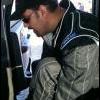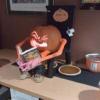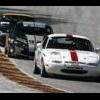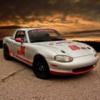
1996 1.8L safe fuel pressure
#1

 Posted 06-19-2012 07:30 AM
Posted 06-19-2012 07:30 AM

The FSM indicates 38-46PSI for fuel pressure but I wanted to do a group-think here and ask what others were running.
I initially set it to 42 (splitting the difference) but wanted to make sure this wouldn't result in a too-lean condition before raceday.
That a good, safe number to start with before the race weekend? Higher to cover AFR at 5k+ RPMs?
TIA,
Brandon
(No, I don't have time to get to the dyno to properly tune this sucker beforehand - plus I'm hoping for a new exhaust and do it all at once.)

#2

 Posted 06-19-2012 07:55 AM
Posted 06-19-2012 07:55 AM



#3

 Posted 06-19-2012 09:17 AM
Posted 06-19-2012 09:17 AM




#4

 Posted 06-19-2012 09:38 AM
Posted 06-19-2012 09:38 AM

East Street Auto Parts
Jim@Eaststreet.com
800 700 9080













#5

 Posted 06-19-2012 09:47 AM
Posted 06-19-2012 09:47 AM








#6

 Posted 06-19-2012 09:47 AM
Posted 06-19-2012 09:47 AM





#7

 Posted 06-19-2012 10:11 AM
Posted 06-19-2012 10:11 AM

Chris
Happiness is a dry martini and a good woman ... or a bad woman.
- George Burns
#8

 Posted 06-19-2012 10:25 AM
Posted 06-19-2012 10:25 AM

East Street Auto Parts
Jim@Eaststreet.com
800 700 9080













#9

 Posted 06-19-2012 10:35 AM
Posted 06-19-2012 10:35 AM


#10

 Posted 06-19-2012 10:37 AM
Posted 06-19-2012 10:37 AM

--because someone commented that we should all post our names, and not be anonymous. I agree.


#11

 Posted 06-19-2012 10:54 AM
Posted 06-19-2012 10:54 AM

Pressure Gauge: 54 psi x +/- .01% = +/- .54 psi < that would be a spread of 1.08 psi. 54 psi x +/- 3% = +/- 1.6 psi < That would be a spread of 6 psi.
Your accuracy/repeatablity is chose with your dollars for the regulator & pressure gauge..



#12

 Posted 06-19-2012 11:27 AM
Posted 06-19-2012 11:27 AM

Got that done already!
Regarding the gauge I used, here it is:
http://www.actron.co...l.php?pid=16174
So on a 0-100PSI scale, reading 35-50 should be an accurate range, no?
And what specific vacuum line(s) need(s) to be disconnected and from where to read the pressure properly?
There's that little black box with a couple of hoses (one goes to the intake, the other went to the stock FPR) which I reconnected to the vacuum line on the adjustable FPR.

#13

 Posted 06-19-2012 11:30 AM
Posted 06-19-2012 11:30 AM

You should get a static number from the pump if it is working correctly. The 99 sends something like 60 psi to the fuel rail. Not sure about the 1.6 and 1.8. A fuel pressure regulator in line should reduce the pressure to a static amount, lets say 54 pounds for a real safe 99. That number should not vary regardless of atmospheric conditions. However the atmospheric conditions will vary greatly during the day changing the density of the air and therefore affecting the air fuel ratio since the fuel is at a static pressure. I believe the density of the fuel can change also but not sure how that affects the volume of fuel at a given pressure and temperature from the regulator. Smart engineer or mechanic types please chime in here.
There are two ranges of numbers from my FSM: one is output pressure from the pump (which is noticeably higher) and the other is at the FPR - I'm using the "@FPR" range.
I'm guessing there's some pressure drop as fuel passes through the filter & goes down the hard line but with Wheeler's adjustable FPR kit for a NA1.8L you're measuring it under the hood/at the fuel rail.
And this may be totally different for '99s too BTW...

#14

 Posted 06-19-2012 12:27 PM
Posted 06-19-2012 12:27 PM

fuel density changes with weather, as does fuel pressure with no changes to the regulator
Theoretically the fuel pressure should not change with spring/diaphragm bypass regulators within its given tolerances.







#15

 Posted 06-19-2012 12:41 PM
Posted 06-19-2012 12:41 PM

The 99s Factory FPR is in the tank with the pump. FPRs mounted inside the engine compartment are subject to more temperature fluctuations than remote (trunk or tank mounted) regulators. Like Drago said the FPR readings vary with atmospheric conditions. I believe the fuel pressure reading shouldnt vary much but volume could as the density of the fuel drops as the temperature rises.There are two ranges of numbers from my FSM: one is output pressure from the pump (which is noticeably higher) and the other is at the FPR - I'm using the "@FPR" range.
I'm guessing there's some pressure drop as fuel passes through the filter & goes down the hard line but with Wheeler's adjustable FPR kit for a NA1.8L you're measuring it under the hood/at the fuel rail.
And this may be totally different for '99s too BTW...
All this means is be conservative, warm you car up to normal operating temps, run some laps watch your AFR. Adjust as neeeded. Go back out run some more and repeat if necessary. My dyno time on the 99 has shown slight increases in HP (noise) the closer I got to stoichimetric mix of air fuel. Makes more torque running a point richer. Don't burn up 2 engines like me trying for perfection, dyno info doesn't warrant it and spending time replacing engines sucks.







#16

 Posted 06-19-2012 01:38 PM
Posted 06-19-2012 01:38 PM

East Street Auto Parts
Jim@Eaststreet.com
800 700 9080













#17

 Posted 06-19-2012 03:37 PM
Posted 06-19-2012 03:37 PM

But, without a trip to the dyno, you have no way of knowing. Your A/F meter may be a great tool, but can you drive down the track at full throttle, while watching both the tach and the A/F gauge and remebering exactly what RPM the gauge read what ratio. If you do that, make sure you are alone on the track and your insurance is up to date.
You really do need a trip to the dyno. This makes sure everything is properly adjusted before you go to the track. Track time is not wasted trying to replicate a dyno run. The AF gauge can be used to tell when conditions change. i.e weather or mechanical problems.
Since you have one of my reg kits, you do not need the vac line. It is there for part throttle drivability and idle emmisions only. How often are you at part throttle? Do you really care about idle emmisions? Will it make any difference if that part throttle moment is 65% or 68% open? Since manifold vac drops to zero with wide open throttle, the vac line has no vac to close down the regulator. So the regulator works at 100% at full throttle with or without the vac line. And full throttle is all we care about.
Since you are quoting the shop manual, understand what it is saying. Pump maximum output is significanly higher than running pressure. It is measured with the pump deadheaded, no return. Running pressure is done with the car running and the regulator taken into effect. Either with or without the vac line connected and at a specified RPM, depending upon how the spec was derived.
Trying to tune the engine without a dyno is like alligning the car without scales. It can be done, but you are accepting a lot of "IFs" Hopping over to the thread about going faster, this is an item that if done correctly can make you go faster. Doing it wrong can make you spend a lot of money very quickly.
The non return system found on all newer cars is an emmisions based design. I forget exactly why, but it is EPA mandated.
Dave
Dave Wheeler
Advanced Autosports, the nations most complete Spec Miata shop
Author, Spec Miata Constructors Guide, version 1 and 2.0
Building Championship winning cars since 1995
4 time Central Division Spec Miata Champion car builder 2012-2013-2014-2017
Back to Back June Sprints Spec Miata 1-2 finishes 2016 and 2017
5 time June Sprints winner in Mazda's
6 Time Northern Conference Champion Car Builder
2014 SCCA Majors National point Champion car builder
2014 SCCA Runoffs winner, T4 (Bender)
2014 Central Division Champion, ITS (Wheeler)
2013 Thunderhill 25 hour winning crew chief
2007 June Sprints winner, (GT1, Mohrhauser)
Over 200 race wins and counting.
www.advanced-autosports.com
dave@advanced-autosports.com
608-313-1230





#18

 Posted 06-19-2012 04:38 PM
Posted 06-19-2012 04:38 PM

Mount you FPR with on board pressure gauge and or data log FP.
Install a wide band O2 sensor with a in car gauge and a analog output.
Connect you data logger to your wide band O2 gauge.
Go to the dyno and tune for max power and torque. Start rich. use the gauge in the car to help you tune as well as your data logger to see the shape of the curve.
Once you have your car making your max power, data log that run. You will use this to compare when you get to the track. Don't lose this data.
Go to the track, start rich and data log your on track session.
compare your on track sessions AF to your best dyno AF curve.
Adjust and repete.
Create A note book to log ambient temp, humidity, barometric pressure, FP, AFR.
I have seen FP change 6 lbs from the dyno to the track.
Or just ignore the above. Ignorance is bliss
The more you log the closer you will be each time out.
V2 Motorsports
#19

 Posted 06-20-2012 08:45 AM
Posted 06-20-2012 08:45 AM

I mainly didn't want to burn up an engine on the first weekend after installing the AFPR.
Getting the AFR gauge & sensor installed meant I wouldn't be running pig rich or cow lean (that the right farm animal?) so less chance of damage with the ancillary of a slight improvement in output.
Dyno time is definitely on the agenda but not for 2012 - same goes for a new exhaust so I'll be doing both during the off-season it looks like.
Again, thanks for the pointers and advice!
See you at LRP this weekend!
B

0 user(s) are reading this topic
0 members, 0 guests, 0 anonymous users




 Sign In
Sign In Create Account
Create Account



 Back to top
Back to top Report
Report










